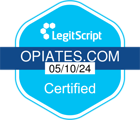Dangers of Oxycodone
Being able to spot the signs of oxycodone addiction can help get the ball rolling on opiate treatment and recovery. You may have suspicions that a loved one is abusing or addicted to a prescription painkiller containing Oxycodone. Knowing for sure can help you to help this person by being supportive and suggesting some form of Oxycodone treatment.
This drug is a potent narcotic available by prescription. It is meant to treat moderate to severe pain. OxyContin contains Oxycodone and is the extended-release version of the drug. First, Oxycodone can be habit-forming. Dependence and addiction can develop quickly once tolerance begins to climb and especially if it involves misuse. Secondly, Oxycodone has been linked to numerous cases of accidental death due to opiate overdose.
In addition to pain relief, Oxycodone can cause feelings of euphoria or a “rush,” if used contrary to recommendations. It can also cause sedation and feelings of relaxation. People who are both physically and psychologically dependent on Oxycodone are said to be addicted. Many addictions develop innocently enough by people who receive a prescription to the medication for pain management. However, more and more people are abusing the drug – so much so that many call it a national epidemic.
Oxycodone Addiction Symptoms and Signs
One key sign of addiction is an increasing tolerance. If someone you love is consistently running out of Oxycodone early, it’s likely he or she is taking too much. Addicted folks often feel so compelled to get and take Oxycodone, that everything else becomes secondary. They may need it just to feel normal.
If a person is abusing and/or addicted to Oxycodone, there are several physical indications as well as behavioral changes that will reveal them. This can be the best time to suggest professional Oxycodone treatment. Some of the physical effects of Oxycodone abuse also include dilated pupils, itching and excessive drowsiness. Users often appear to be very tired with heavy eyelids and rolling eyes, looking as though they are struggling to stay awake. We commonly refer to this as “nodding”. When users are “nodding,” they actually believe they are more conscious than they are. They may continue to try to communicate and act normal, mumbling incoherently and trailing off.
Behavioral changes can also be indicative of Oxycodone addiction. These are also often easier to identify early on. Some behavioral changes to look for are:
- Changes in attitude or personality
- Loss of old friends or making new friends
- Drug-seeking activities or crimes
- Lack of hygiene and overall regard for appearance
- Loss of interest in school or work
- Unexplained absences
- Difficulty focusing or paying attention
- Secretive behavior
- Sudden need for privacy
- Chronic lying
- Unexplained need for money
- Stealing money or valuables
- Abuse of other substances
- Injection marks (heroin can be a substitute as it’s cheaper/more easily accessible)
- Evidence of self-induced injuries to get pain medication










